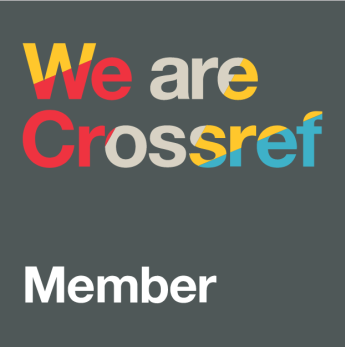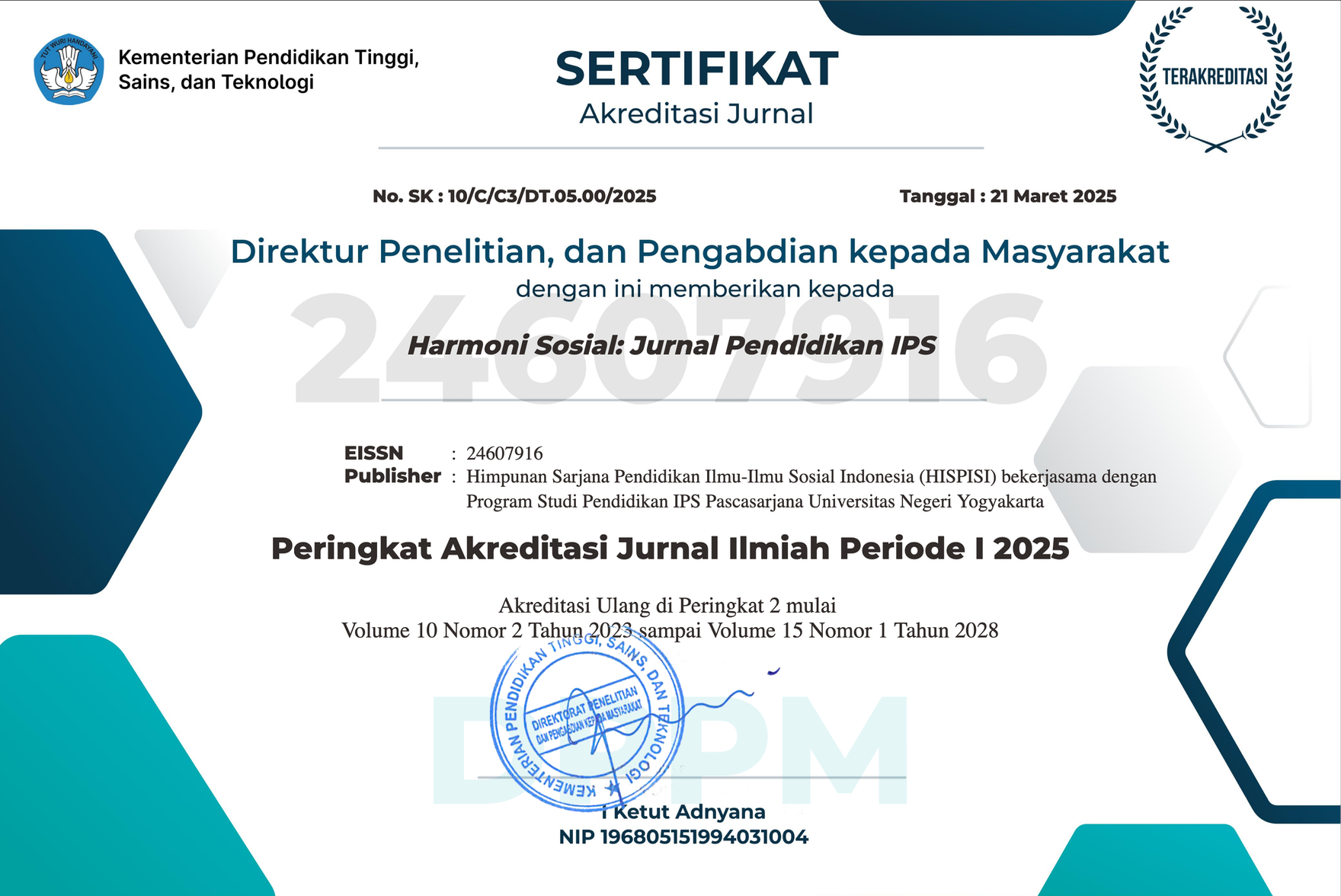Evaluating the effectiveness of the blended learning station rotation model: A meta-analysis of student learning outcomes
Downloads
This paper is analyzing the effect of the blended learning station rotation model on students' learning outcomes through a meta-analytic approach. The background of this research stems from the increasing use of digital technology in education, particularly after the COVID-19 pandemic, which encouraged teachers to integrate face-to-face and online learning into a unified instructional strategy. The station rotation model is considered adequate as it offers flexibility in learning time, facilitates differentiated learning, and enhances interaction between teachers and students. However, previous studies have shown varying levels of effectiveness, necessitating a comprehensive synthesis to gain an overall understanding of its impact on learning outcomes. This study employs the meta-analysis method following the PRISMA, which include the stages of identification, screening, eligibility, and inclusion. Sources obtained from indexed international journal articles, with inclusion. The results revealed that the station rotation model had a positive and significant effect on students' learning outcomes, with a moderate to high category of influence. Furthermore, moderators such as educational level, subject matter, duration of intervention, and research location were found to affect the magnitude of its impact. This study reaffirms that implementing the station rotation model can be an effective learning strategy to improve learning outcomes, particularly when integrated with adaptive instructional design and relevant digital media. There are expected to serve as a reference for educators, curriculum developers, and policymakers in optimizing the application of the blended learning model, specifically the station rotation type, at various educational levels. Future researchers are encouraged to expand the scope of inquiry to include non-cognitive variables such as motivation, learning engagement, and 21st-century skills, thereby providing a more comprehensive picture of the model's effectiveness.
Downloads
Abdullah, A. S. Z., Shafie, A., Abdullah, Z., Abdullah, A. S. Z., Shafie, A., & Abdullah, Z. (2023). The implications on innovative gamification approach: Station Rotation Gamification (SRG) to increase student’s motivation. Tuijin Jishu/Journal of Propulsion Technology, 44(4), 6373–6382. https://doi.org/10.52783/tjjpt.v44.i4.2201
Abdusselam, M. S., & Karal, H. (2020). The effect of using augmented reality and sensing technology to teach magnetism in high school physics. Technology, Pedagogy and Education, 29(4), 407–424. https://doi.org/10.1080/1475939X.2020.1766550
Akçayır, M., Akçayır, G., Pektaş, H. M., & Ocak, M. A. (2016). Augmented reality in science laboratories: The effects of augmented reality on university students’ laboratory skills and attitudes toward science laboratories. Computers in Human Behavior, 57, 334–342. https://doi.org/10.1016/j.chb.2015.12.054
Akram, H., Abdelrady, A. H., Al-Adwan, A. S., & Ramzan, M. (2022). Teachers’ perceptions of technology integration in teaching-learning practices: A systematic review. Frontiers in Psychology, 13. https://doi.org/10.3389/fpsyg.2022.920317
Amelia, M. (2020). Blended learning. ECONOMICA, 8(2), 142–150. https://doi.org/10.22202/economica.2020.v8.i2.3979
Anggoro, B. S., Dewantara, A. H., Suherman, S., Muhammad, R. R., & Saraswati, S. (2025). Effect of game-based learning on students’ mathematics high order thinking skills: A meta-analysis. Revista de Psicodidáctica (English Ed.), 30(1), 500158. https://doi.org/https://doi.org/10.1016/j.psicoe.2024.500158
Astuti, P., & Febrian, F. (2019). Blended learning syarah: Bagaimana penerapan dan persepsi mahasiswa. Jurnal Gantang, 4(2), 111–119. https://doi.org/10.31629/jg.v4i2.1560
Ayob, N. F. S., Halim, N. D. A., Zulkifli, N. N., Zaid, N. M., & Mokhtar, M. (2020). Overview of blended learning: The effect of station rotation model on students’ achievement. Journal of Critical Reviews, 7(6), 320–326. https://doi.org/10.31838/jcr.07.06.56
Balduzzi, S., Rücker, G., & Schwarzer, G. (2019). How to perform a meta-analysis with R: A practical tutorial. BMJ Mental Health, 22(4).
Battelle for Kids. (2019). Framework for 21st century learning. Battelle for Kids.
Bingimlas, K. A. (2009). Barriers to the successful integration of ict in teaching and learning environments: A review of the literature. EURASIA Journal of Mathematics, Science and Technology Education, 5(3). https://doi.org/10.12973/ejmste/75275
Borenstein, M., Hedges, L. V., Higgins, J. P. T., & Rothstein, H. R. (2021). Introduction to meta-analysis. John Wiley & Sons.
Bouilheres, F., Le, L. T. V. H., McDonald, S., Nkhoma, C., & Jandug-Montera, L. (2020). Defining student learning experience through blended learning. Education and Information Technologies, 25(4), 3049–3069. https://doi.org/10.1007/s10639-020-10100-y
Chiu, T. K. F. (2021). Digital support for student engagement in blended learning based on self-determination theory. Computers in Human Behavior, 124, 106909. https://doi.org/10.1016/j.chb.2021.106909
Christina, S., Rusijono, R., & Bachtiar, B. (2019). The application of blended learning’s station rotation method in elementary school’s science education to improve higher order thinking skills. Dinamika Jurnal Ilmiah Pendidikan Dasar, 11(2), 79. https://doi.org/10.30595/dinamika.v11i2.5048
Cohen, J. (1992). Statistical power analysis. Current Directions in Psychological Science, 1(3), 98–101. https://doi.org/10.1111/1467-8721.ep10768783
Costan, E., Gonzales, G., Gonzales, R., Enriquez, L., Costan, F., Suladay, D., Atibing, N. M., Aro, J. L., Evangelista, S. S., Maturan, F., Selerio, E., & Ocampo, L. (2021). Education 4.0 in developing economies: A systematic literature review of implementation barriers and future research agenda. Sustainability, 13(22), 12763. https://doi.org/10.3390/su132212763
Egger, M., Smith, G. D., Schneider, M., & Minder, C. (1997). Bias in meta-analysis detected by a simple, graphical test. BMJ, 315(7109), 629–634. https://doi.org/10.1136/bmj.315.7109.629
Garrison, D. R. R., & Kanuka, H. (2004). Blended learning: Uncovering its transformative potential in higher education. The Internet and Higher Education, 7(2), 95–105. https://doi.org/10.1016/j.iheduc.2004.02.001
Glass, G. V. (1976). Primary, secondary, and meta-analysis of research. Educational Researcher, 5(10), 3–8. https://doi.org/10.3102/0013189X005010003
Graham, C. R., Henrie, C. R., & Gibbons, A. S. (2013). Developing models and theory for blended learning research. Routledge.
Higgins, J. P. T., & Thompson, S. G. (2002). Quantifying heterogeneity in a meta‐analysis. Statistics in Medicine, 21(11), 1539–1558. https://doi.org/10.1002/sim.1186
Hrastinski, S. (2019). What do we mean by blended learning? TechTrends, 63(5), 564–569. https://doi.org/10.1007/s11528-019-00375-5
Irhamsyah, T. (2023). Kebijakan umum implementasi merdeka belajar. Jurnal At-Tabayyun, 6(2), 70–81. https://doi.org/10.62214/jat.v6i2.130
Kemendikbudristek. (2023). Ministry of Education, Culture, Research, and Technology (Kemendikbudristek) led The Second ASEAN Regional meeting on digital transformation of education systems. Studyinindonesia.Kemdikbud.Go.Id. https://studyinindonesia.kemdikbud.go.id/web/post/read/ministry-of-education-culture-research-and-technology-kemendikbudristek-led-the-second-asean-regional-meeting-on-digital-transformation-of-education-systems?utm_source=chatgpt.com
Kumar, A., Krishnamurthi, R., Bhatia, S., Kaushik, K., Ahuja, N. J., Nayyar, A., & Masud, M. (2021). Blended learning tools and practices: A comprehensive analysis. IEEE Access, 9, 85151–85197. https://doi.org/10.1109/ACCESS.2021.3085844
Lee, E. (2025). A study on Learner satisfaction with beginner German classes using the station rotation model. Korean Association For Learner-Centered Curriculum And Instruction, 25(4), 429–442. https://doi.org/10.22251/jlcci.2025.25.4.429
Li, B.-Z., Cao, N.-W., Ren, C.-X., Chu, X.-J., Zhou, H.-Y., & Guo, B. (2020). Flipped classroom improves nursing students’ theoretical learning in China: A meta-analysis. PLOS ONE, 15(8), e0237926. https://doi.org/10.1371/journal.pone.0237926
Lukman, L., Istadi, I., & Wiryawan, K. G. (2020). Panduan editorial pengelolaan jurnal ilmiah. Direktorat Pengelolaan Kekayaan Intelektual Deputi Bidang Penguatan Riset Dan Pengembangan Kementerian Riset Teknologi/Badan Riset Dan Inovasi Nasional.
Mahalli, M., Nurkamto, J., Mujiyanto, J., & Yuliasri, I. (2019). The implementation of station rotation and flipped classroom models of blended learning in EFL learning. English Language Teaching, 12(12), 23. https://doi.org/10.5539/elt.v12n12p23
Monk, E. F., Guidry, K. R., Pusecker, K. L., & Ilvento, T. W. (2020). Blended learning in computing education: It’s here but does it work? Education and Information Technologies, 25(1), 83–104. https://doi.org/10.1007/s10639-019-09920-4
Moskal, P., Dziuban, C., & Hartman, J. (2013). Blended learning: A dangerous idea? The Internet and Higher Education, 18, 15–23. https://doi.org/10.1016/j.iheduc.2012.12.001
Oktarianto, M. L., Hidayat, A., & Gofur, A. (2024). Exploring the role of self-efficacy in station rotation: Enhancing critical thinking and literacy skills among primary learners. Psychological Science and Education, 29(3), 160–181.
Pattanapichet, F., & Wichadee, S. (2015). Using space in social media to promote undergraduate students’ critical thinking skills. Turkish Online Journal of Distance Education, 16(4), 38–49. https://doi.org/10.17718/tojde.94170
Picciano, A. G. (2019). Blended learning: Implications for growth and access. Online Learning, 10(3). https://doi.org/10.24059/olj.v10i3.1758
Rahmani, A., & Zitouni, K. S. (2022). Blended learning and flipped classrooms application during post pandemic. Arab World English Journal, 13(2), 451–461. https://doi.org/10.24093/awej/vol13no2.31
Retnawati, H., Apino, E., Kartianom, K., Djidu, H., & Anazifa, R. D. (2018). Pengantar analisis meta. Parama Publishing.
Rosnow, R. L., & Rosenthal, R. (1996). Computing contrasts, effect sizes, and counternulls on other people’s published data: General procedures for research consumers. Psychological Methods, 1(4), 331–340. https://doi.org/https://psycnet.apa.org/buy/1996-06601-001
Rothstein, H. R. (2008). Publication bias as a threat to the validity of meta-analytic results. Journal of Experimental Criminology, 4(1), 61–81. https://doi.org/10.1007/s11292-007-9046-9
Santosa, M. H. (2022). Freedom to learn (merdeka belajar). https://doi.org/10.31219/osf.io/jkq7a
Sari, A. P., Marzal, J., & Zurweni, Z. (2025). Pengembangan blended learning tipe station rotation model berbasis project based learning berorientasi kemampuan berpikir kritis matematis siswa SMP. Journal on Education, 7(2), 9777–9785. https://doi.org/10.31004/joe.v7i2.7967
Seitova, M., & Khalmatova, Z. (2025). The blended learning station rotation model in efl teaching: Opinions of the implementer. Turkish Online Journal of Distance Education, 26(1), 204–219. https://doi.org/10.17718/tojde.1438392
Siripongdee, K., Pımdee, P., & Tuntıwongwanıch, S. (2020). A blended learning model with IoT-based technology: Effectively used when the COVID-19 pandemic? Journal for the Education of Gifted Young Scientists, 8(2), 905–917. https://doi.org/10.17478/jegys.698869
Staker, H., & Horn, M. B. (2012). Classifying K-12 blended learning. In Innosight institute. Innosight Institute.
Tayyeh, H. K., & Hassan, A. K. (2024). The rotation model of blended learning stations and its impact on mathematical intuition according to a proposed matrix. International Journal of Religion, 5(10), 3256–3268. https://doi.org/10.61707/kj1h1487
Truitt, A. A., & Ku, H.-Y. Y. (2018). A case study of third grade students’ perceptions of the station rotation blended learning model in the United States. Educational Media International, 55(2), 153–169. https://doi.org/10.1080/09523987.2018.1484042
Xiangze, Z., & Abdullah, Z. (2023). Station rotation with gamification approach to increase students’ engagement in learning english online. Arab World English Journal, 9, 105–121. https://doi.org/10.24093/awej/call9.7
Xu, Z., Yuan, H., & Liu, Q. (2021). Student performance prediction based on blended learning. IEEE Transactions on Education, 64(1), 66–73. https://doi.org/10.1109/TE.2020.3008751
Yılmaz, Y., & Fırat, E. A. (2024). Station-rotation blended learning model in science education a case study for rural classrooms. International Journal of Science Education, 1–28. https://doi.org/10.1080/09500693.2024.2394707
Yoade, F., & Asaaju, O. (2024). Effectiveness of station-rotation and flipped-blended learning strategies in improving study habits and academic performance of secondary school biology students in Osun State, Nigeria. African Journal of Teacher Education, 13(3), 133–145. https://doi.org/10.21083/ajote.v13i3.7695
Yukhymenko, V., Borysova, S., Bazyl, O., Hubal, H., & Barkar, U. (2024). Station rotation model of blended learning in higher education: Achieving a balance between online and in-person instruction. Conhecimento & Diversidade, 16(41), 182–202. https://doi.org/10.18316/rcd.v16i41.11434

This work is licensed under a Creative Commons Attribution-ShareAlike 4.0 International License.
The Authors submitting a manuscript do so on the understanding that if accepted for publication, copyright publishing of the article shall be assigned to Harmoni Sosial: Jurnal Pendidikan IPS
 | Harmoni Sosial: Jurnal Pendidikan IPS by http://journal.uny.ac.id/index.php/hsjpi is licensed under a Creative Commons Attribution-ShareAlike 4.0 International License. |











 ISSN Print
ISSN Print









